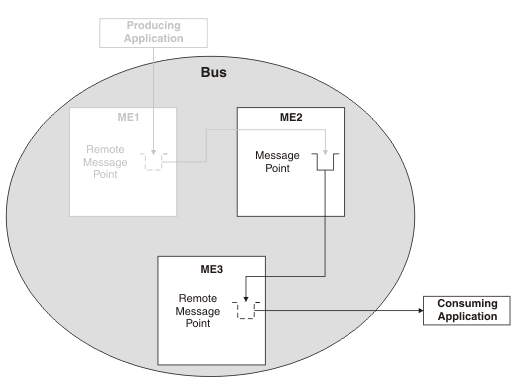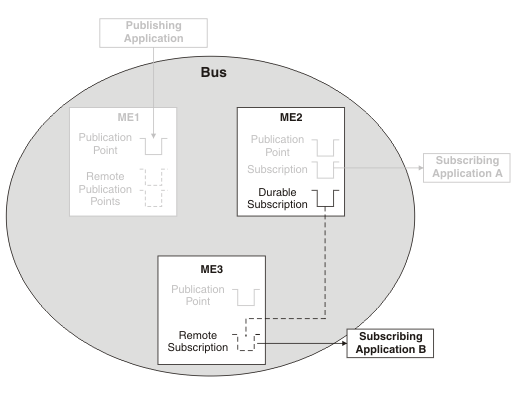Investigating why messages are not being consumed through a remote message point or subscription point, while the application is stopped
There are a set of checks that we can carry out to investigate why messages are not being consumed at a destination on a service integration bus, when the messages are being routed through a remote message point and the consuming application is stopped. Follow the steps in either Investigating why point-to-point messages are not being consumed or Investigating why publish/subscribe messages are not arriving at a subscription, whichever best suits the problem. These topics contain preliminary checks and investigative tasks that you should carry out before proceeding with this task. Complete this task as part of either Investigating why point-to-point messages are not being consumed or Investigating why publish/subscribe messages are not arriving at a subscription. This task explains how to investigate the flow of messages in a scenario where the messages are being routed through a remote message point and the consuming application is stopped. The following diagrams illustrate two possible scenarios. In Figure 1, a bus contains three messaging engines, ME1, ME2 and ME3. The producing application is connected to ME1 and the consuming application is connected to ME3. The messages are routed from ME1 to ME3 through ME2, and are consumed from ME3. This scenario is only concerned with ME2 and ME3. ME3 hosts a remote message point that represents the message point hosted by ME2. In Figure 2, ME2 and ME3 host publication points that are represented by remote publication points on ME1, where the producing application is attached. Subscribing application B is connected to ME3 and receives messages indirectly from ME1, through a subscription on ME2. a remote subscription point on ME 3. These messaging engines are referred to in the following steps.
Figure 1. Point-to-point message consumption by using a remote message point

Figure 2. Publish/subscribe messaging by using a remote message point

- If we have followed the steps in Investigating why point-to-point messages are not being consumed or Investigating why publish/subscribe messages are not arriving at a subscription before starting
this task, you should have displayed a list of message requests. On
the previous panel (runtime properties for the message point), check
that the Message requests issued (point-to-point
only) or Message requests received (publish/subscribe
only) value is greater than zero. If the value is not greater than
zero, no requests have been made. Check the consuming application for errors:
- Check that the application is connected to ME2.
- Check that the application did not produce any errors that might explain why messages are not being consumed.
- Check that the consumer was started.
- Check that the application did attempt to consume a message:
- If the application uses an asynchronous consumer, check that the asynchronous consumer was registered.
- If the application is synchronous, check that the consumer performed a "receive" or a "receive with wait" function (this might require a modification to the application to extend the time that the application waits for a message).
- If the number of issued message requests is greater than zero, requests from ME3 to ME2 for messages on the message point have been made. Check that the Completed message requests value is greater than zero. If not, check that the two messaging engines can communicate with each other, see Service integration troubleshooting: Checking the communication between two messaging engines in a bus.
- If the number of completed message requests is greater
than zero, requests are being issued by ME3, processed by ME2 and
completed back to ME3. To ensure that those requests were made by
the application being investigated, record the current values of Completed
message requests and either Message requests
issued or Message requests received.
Rerun the consuming application and check that both values have increased.
If the values do not increase, the application did not make a request
from ME3 to ME2 for this message point (the existing numbers relate
to a previous application that was consuming messages). Check the consuming application for errors:
- Check that the application was started.
- Check that the name of the destination being consumed from is correct.
- If the values do increase, the message request was issued
and completed, but no message was returned or processed by the consuming
application.
- Check that the application selection criteria match the available message or messages on the message point.
- Check that the application is correctly receiving the message, by checking for application or runtime errors.
Next steps
If still having problems, contact the IBM customer service representative.Last updated Nov 10, 2010 8:23:07 PM CST